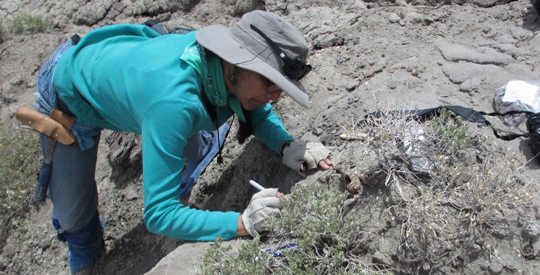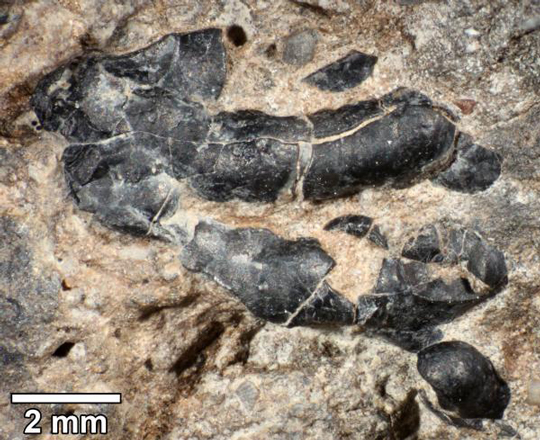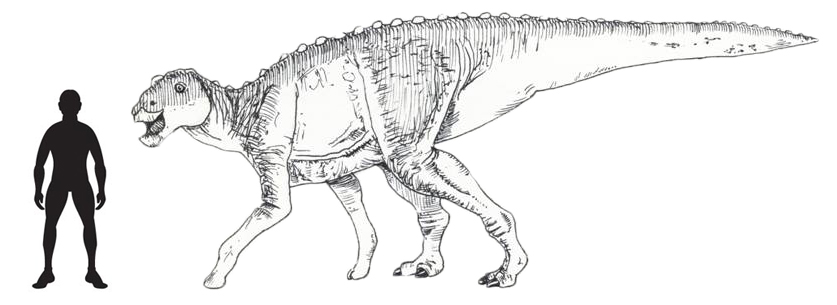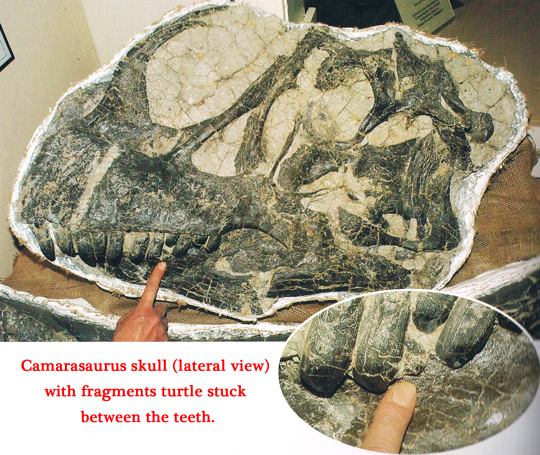Crunchy Crustaceans and Rotting Wood on the Menu for Dinosaurs
Kaiparowits, Coprolites, Crustaceans and Consumption
This week sees the publication of a new scientific paper that questions the strictly herbivorous diet of ornithischian dinosaurs. Writing in the journal “Scientific Reports”, the researchers, which include lead author, Associate Professor Karen Chin, (University of Colorado, Boulder), describe the contents of several coprolites (dinosaur dung), from numerous sites in the Upper Cretaceous Kaiparowits Formation.
Kaiparowits, Coprolites, Crustaceans and Consumption
Turns out that some hefty Late Cretaceous herbivores were tucking into a smorgasbord of rotting wood, insects and crustaceans, despite the fact that when these dinosaurs lived, approximately 75 million-years-ago, this part of Laramidia was a botanist’s paradise.
Associate Professor Karen Chin Picking at Some Potential Prehistoric Poo

Karen Chin (Department of Geological Sciences and Museum of Natural History, University of Colorado Boulder), searching for coprolite.
Picture credit: University of Colorado, Boulder (Colorado)
Herbivorous Dinosaurs were Not Strictly Herbivores
Direct evidence of the diet of a dinosaur is not usually found, but there is some evidence, plant remains and other matter which is present in the body cavity for example. Then there is the assessment of tooth wear at the microscopic layer, an analysis such as this when compared to the wear patterns on the teeth of extant animals can prove helpful, but most of our knowledge about dinosaur diet has been inferred from studying their fossilised faeces.
In this new study, the researchers describe the fossilised faecal matter (coprolites) that indicate a recurring consumption of crustaceans and rotting wood. The scientists conclude that this may have been seasonal behaviour, with female duck-billed dinosaurs seeking out additional calcium and protein to help supplement their diets in preparation for egg laying. Many species of avian dinosaur (birds), adopt similar feeding strategies today, deliberately selecting food items that contain calcium, copious quantities of which are needed if the female is going to be able to produce healthy, viable eggs.
The Remains of the Shell of a Crustacean Found in the Dinosaur Coprolite
Picture credit: University of Colorado, Boulder (Colorado)
A Calcium Taste Receptor
In mammals, the calcium taste receptor gene has recently been discovered, the same gene may exist in other tetrapods – birds for instance. It is also known that taste buds in different species are sometimes co-opted into undertaking different taste functions, so birds and by implication, their extinct close relatives the Dinosauria, might well have had specific calcium detecting sensors on their tongues or elsewhere in their mouths.
There is still a lot we don’t know about eggs of living dinosaurs, (birds) and we must be careful not to draw too many conclusions from this fossil evidence. However, this paper supports similar research undertaken previously, when the coprolites of ornithischian dinosaurs (seventeen fossilised faeces), were studied from the Two Medicine Formation of the United States.
Which Dinosaur “Dung” It?
The coprolites are similar to those from the Two Medicine Formation, these trace fossils were attributed to the duck-billed dinosaur Maiasaura. The scientists cannot be certain as to what type of dinosaur produced this Kaiparowits Formation dung, there are a number of potential candidates. Several bird-hipped dinosaurs are associated with the various bedding planes of the Kaiparowits Formation from which the coprolites were excavated, but which of these produced the dung, which dinosaur “dung” it?
Firstly, the coprolites are large, with some of them having an estimated volume of around ten litres, this rules out a hypsilophodontid, along with the pachycephalosaur known from this formation. Whichever type of dinosaur produced the dung, it must have possessed multi-toothed dental batteries capable of handling the coarse diet. This probably rules out a thyreophoran (armoured dinosaur). That leaves three described genera of ceratopsian – there is a centrosaurine taxa – Nasutoceratops and two representatives of the Chasmosaurinae, namely Kosmoceratops and Utahceratops. However, although both ceratopsians and duck-billed dinosaurs possessed dental batteries, they chewed food in their mouths in different ways.
Most Likely Hadrosaur Coprolites
The scientists studying these coprolites concluded, that their constituents and their similarity to those fossil faeces ascribed to Maiasaura, suggests in all likelihood, that the coprolites were produced by a type of hadrosaur. Hadrosaurid bones are the most common body fossil associated with the Kaiparowits Formation and two genera are known, the crested Parasaurolophus (Lambeosaurinae) and the hadrosaurine Gryposaurus.
Gryposaurus – A Likely Candidate for the Coprolites
Picture credit: Everything Dinosaur
For models and replicas of hadrosaurs and other ornithischian dinosaurs: Safari Ltd. Wild Safari Prehistoric World Models.
Rotten Wood and Insects
The scientists propose that duck-billed dinosaurs actively sought out rotting wood and ingested this material. It would have provided a source of carbon and the fungi helping to break down the cell walls might also have provided additional nutrition. Copious invertebrates would probably have been eaten too. Many of these herbivores would have accidentally ingested small animals such as insects as they consumed leaves and other plants, but at least ten of the fifteen coprolites examined from three different stratigraphic layers, contained fragments of crustacean shells. If these were crabs, the carapace of some of the specimens are several centimetres in diameter.
The researchers suggest that these herbivores would have known what they were eating, these fossils can be interpreted as evidence of plant-eating dinosaurs deliberately eating animals. It might be reasonable to infer that these coprolites reflect a seasonal shift in the diet of herbivores, that might have related to the breeding cycle. This interpretation of the fossil evidence provides yet another link between non-avian and avian dinosaurs.
Karen Chin summarised the research findings:
“While it is difficult to prove intent regarding feeding strategies, I suspect these dinosaurs targeted rotting wood because it was a great source of protein in the form of insects, crustaceans and other invertebrates. If we take into account the size of the crustaceans and that they were probably wriggling when they were scooped up, the dinosaurs would have likely been aware of them and made a choice to ingest them.”
A few years ago, we remember seeing fragments of fossilised turtle, stuck between the teeth of a Camarasaurus. At the time, we thought that this was as a result of the depositional process. However, perhaps a pre-gravid Camarasaurus may have picked over the carcass of a turtle in a bid to pick up valuable nutrients.
Bits of Fossil Turtle Found in Between the Teeth of a Camarasaurus
Picture credit: Peter Larson Black Hills Institute of Geological Research
The scientific paper: “Consumption of Crustaceans by Megaherbivorous Dinosaurs: Dietary flexibility and Dinosaur Life History Strategies” by Karen Chin, Rodney M. Feldmann & Jessica N. Tashman published in the open access journal “Scientific Reports”.
Visit the Everything Dinosaur website: Everything Dinosaur.




